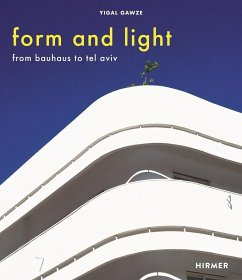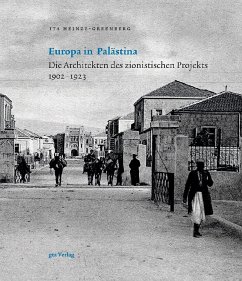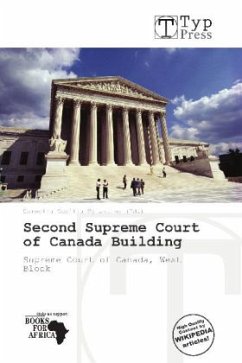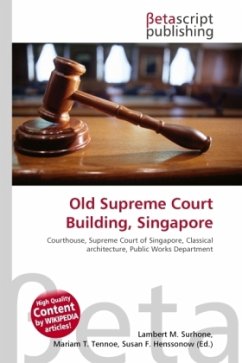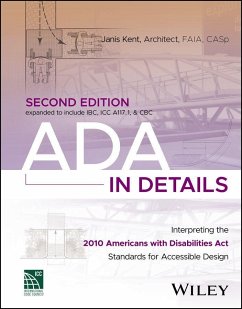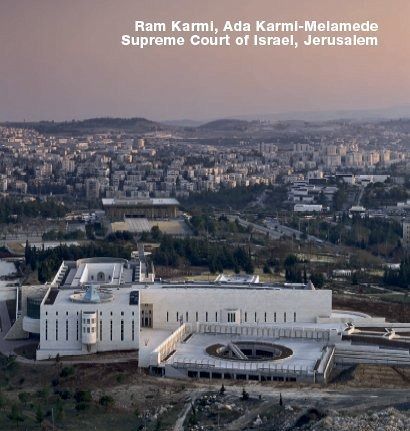
Ram Karmi, Ada Karmi-Melamede, Supreme Court of Israel, Jerusalem
Versandkostenfrei!
Versandfertig in 2-4 Wochen
36,00 €
inkl. MwSt.

PAYBACK Punkte
0 °P sammeln!
Intent on realizing her late husband's vision, Dorothyde Rothschild first offered to provide fundingfor a new building housing the Supreme Court ofIsrael in the 1960s. In 1983 the offer was seriouslyconsidered and accepted.Renowned architects from Israel and from allover the world entered into a two-stage competitionin 1986. Ada Karmi-Melamede and RamKarmi, siblings their own architecture practices,were asked to compete as a team. Their contributionstood out clearly against the other entries.Instead of proposing a formal and monumentalscheme, the Karmis came up with a coherentsite-specific bui...
Intent on realizing her late husband's vision, Dorothyde Rothschild first offered to provide fundingfor a new building housing the Supreme Court ofIsrael in the 1960s. In 1983 the offer was seriouslyconsidered and accepted.Renowned architects from Israel and from allover the world entered into a two-stage competitionin 1986. Ada Karmi-Melamede and RamKarmi, siblings their own architecture practices,were asked to compete as a team. Their contributionstood out clearly against the other entries.Instead of proposing a formal and monumentalscheme, the Karmis came up with a coherentsite-specific building which roots itself into theland, continues the stone language of Jerusalem,and relates to its unique vibrant light.Pure geometrical volumes are arranged to forma balanced composition and complex whole. Acareful equilibrium is created between the gravityof local stone-masonry walls and the immaterialplay of light and shadow in the voids and volumesof the structure. The Supreme Court acts as partof a larger civic urban ensemble and forms agateway to Government Hill offering a pedestrianwalkway to the Knesset.While referred to as a single building, in realitythe Supreme Court building is an ensembleapplying urban principles to the interior, thus producingpublic spaces throughout. Half architecture,half landscape architecture, the building isdeeply anchored in its site and reaches out furtherthan its own walls. Four main functions aremanifested in four distinct geometric volumes organizedby two cardinal axes. These axes separatethe four main program elements: the library,the judges' chambers, the courtrooms and theparking area. The allocation of the various volumeswithin the building allows for a sequence ofin-between spaces which are used for circulation,for the penetration of natural light and for the transitionbetween the public and private domains.Paul Goldberger stated in The New York Timesin 1995 that 'the sharpness of the Mediterraneanarchitectural traditionand the dignity of law arehere married with remarkable grace'.Anne-Catrin Schultz studied architecture inStuttgart and Florence. Following post-doctoralresearch at MIT, she relocated to the San FranciscoBay Area and worked for several years withTurnbull Griffin Haesloop and Skidmore Owings& Merrill. She has taught at the University of Californiain Berkeley and is currently teaching at theCalifornia College of the Arts and City College ofSan Francisco. Richard Bryant is one of the bestknownarchitectural photographers, working allover the world. He is the only photographer withan honorary fellowship of the Royal Institute ofBritish Architects.
Dieser Artikel kann nur an eine deutsche Lieferadresse ausgeliefert werden.







